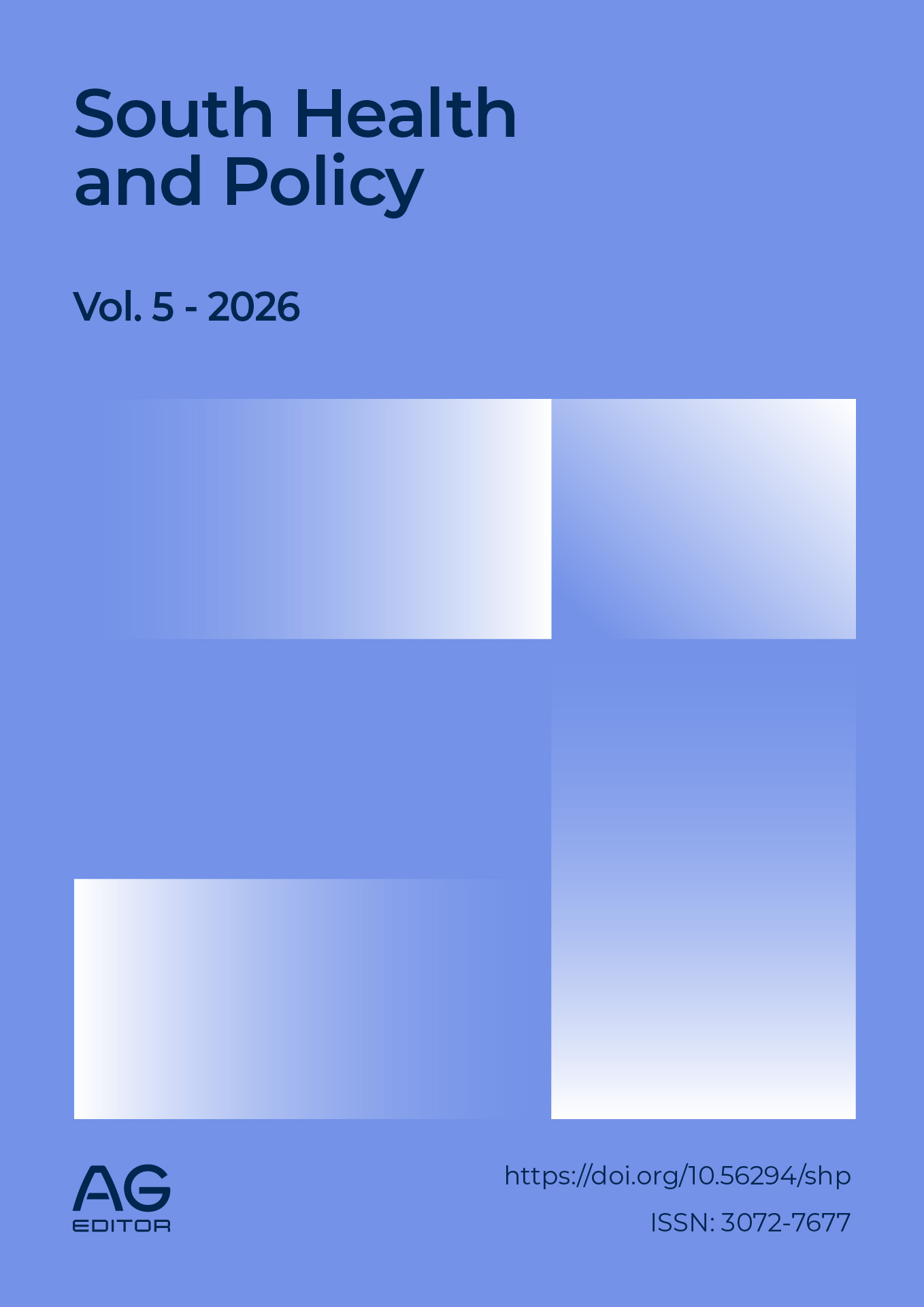Endobronchial tumor, diagnosis and clinical and imaging evolution. A case report
DOI:
https://doi.org/10.56294/shp2026240Keywords:
Lung cancer, endobronchial tumor, biopsychosocial damage, computed axial tomography (CT) scanAbstract
Introduction: Lung cancer has been known since the 19th century, and to date has experienced multiple advances in diagnosis and treatment, which imply a favorable prognosis for the patient. However, worldwide it exhibits high morbidity and mortality rates, it occurs mainly in males, with an average age of 65 years, is closely related to smoking and is notable for its low survival rates, particularly when diagnosed in advanced stages, as often occurs in endobronchial presentation. Objective: To describe the diagnosis and clinical imaging evolution of a patient with an endobronchial tumor. Case presentation: A 56-year-old male patient, a smoker and a carpenter by profession, who began to present chest pain and a dry, irritating cough and went to the family doctor. A series of complementary tests were prescribed, which yielded pathological results, including a chest X-ray, which supported the initial diagnosis, and a computed axial tomography (CT) scan, which confirmed the presence of an endobronchial tumor. Oncological staging and follow-up were performed, and despite complications that arose due to the patient's withdrawal from the consultation, the patient progressed well. Conclusions: Early diagnosis of lung cancer based on clinical methods and imaging studies is essential. This can improve survival and reduce the physical, emotional, and social impact on the patient and their family, as demonstrated in our clinical case. A multidisciplinary approach is essential, combining technology, clinical knowledge, and human sensitivity to provide comprehensive care and improve the patient's quality of life.
References
1. Hernando-Pardo D, Viola L, Zuluaga J, Rojas L, Bobadilla IA, Martínez S et al. Recomendaciones para el diagnóstico, seguimiento y tratamiento Cáncer del pulmón de células no pequeñas temprano en Colombia. Med. 2023; 45 (4):767-804. Disponible en: http://doi.org/10.56050/01205498.2316
2. Gómez-Tejedas JJ, Tamayo-Velázquez O, Iparraguirre-Tamayo AE, Diéguez-Guach RA. Comportamiento de los factores de riesgo de la neoplasia de pulmón. Univ Méd Pinareña. 2020; 16(3):e568:1-6. Disponible en: http://www.revgaleno.sld.cu/index.php/ump/article/view/568
3. Arrieta O, Cardona AF, Zatarain-Barron ZL, Rolfo C, Ordoñez C, Ruiz-Patiño A et al. HISTORIA DEL CÁNCER DE PULMÓN: DESDE DOLL Y HILL HASTA LAS TERAPIAS DE PRECISIÓN. Med. 2021;43(1):107-39. Disponible en: http://revistamedicina.net/index.php/Medicina/article/view/1589
4. Acerca del cáncer de pulmón. American Cancer Society. Disponible en: www.cancer.org/es/cancer/entendimiento-del-cancer/que-es-el-cancer.html
5. Cordova-Sanchez GA, Ugarte-Palacios CV, Ugarte-Palacios NA, Morales-Labre KO. Cáncer de pulmón y su importancia en el diagnóstico primario. RECIAMUC. 2022; 6(2): 208-217. Disponible en: https://reciamuc.com/index.php/RECIAMUC/article/view/854
6. Nazario-Dolz AM, Álvarez-Matos D, Castillo-Toledo L, Miyares-Peña MV, Garbey-Nazario A. Algunas especificidades en torno al cáncer de pulmón. Rev Med Militar. 2021; 50(1):e0210725:1-17. Disponible en: http://revmedmilitar.sld.cu/index.php/mil/article/view/7
7. González R, Barra S, Riquelme A, Reyes R, Spencer L, Alarcón F et al. Cáncer pulmonar: caracterización, estadificación y supervivencia en una cohorte de una década en un hospital del sistema público de salud de Chile. Rev Med Chile. 2022; 150: 7-16. Disponible en: http://dx.doi.org/10.4067/S0034-98872022000100007
8. Escalona-Fernández LA. Resolución de problemas médicos mediante modelos matemáticos de predicción cuantitativa y cualitativa. Rev Cubana de Investigaciones Biomédicas. 2022; 41:e594: 1-19. Disponible en: http://revbiomedica.sld.cu/index.php/ibi/article/view/5
9. Arroyo-Varela M, Larrosa-Jiménez R, Gómez-Maldonado J, Espinosa-García E, Bautista-Moreno R. NUEVOS BIOMARCADORES DE CÁNCER DE PULMÓN BASADOS EN MIRNA. Rev Esp Patol Torac. 2022; 34(2): 91-97.
10. Sosa Remón A, Jerez Álvarez AE, Cuba Naranjo AJ, Auza-Santivañez JC, Tecuatl Gómez LM, Aguirre Cruz B. Neurobioethics and bioethics in the severe oncology patient with neurological complications. Salud, Ciencia y Tecnología - Serie de Conferencias [Internet]. 2023 Nov. 11 [cited 2025 Apr. 7];2:542. Available from: https://doi.org/10.56294/sctconf2023542
11. Martín-Nieto E. FACTORES PRONÓSTICOS EN UNA SERIE DE PACIENTES CON CÁNCER DE PULMÓN TRATADOS EN EL SERVICIO DE ONCOLOGÍA RADIOTERÁPICA DEL HCUV. Trabajo de fin de Grado Medicina curso 2022-2023. Universidad de Valladolid; 2023. Disponible en: https://uvadoc.uva.es/handle/10324/60540
12. Osejo-Betancourt M, Sánchez E, Saavedra A, Diaz-Santos G, Callejas AM. Tumores endobronquiales: revisión del abordaje diagnóstico y tratamiento endoscópico. Rev Colombiana de Neumología. 2021; 33(2): 25-36. Disponible en: https://doi.org/10.30789/rcneumologia.v33.n2.2021.539
13. Serrano-García L, Fernández Reynaldo GD, López- Roque F. Uso racional de las investigaciones diagnósticas microbiológicas y formación profesional del médico: una experiencia actual. Rev Cubana de Investigaciones Biomédicas. 2022; 41:e2066: 1-5. Disponible en: http://revbiomedica.sld.cu/index.php/ibi/article/view/2
Published
Issue
Section
License
Copyright (c) 2026 Yamila Cruz Cruz, Mildred Ericka Kubatz La Madrid, Orlian Moreno Perera, Jennifer Collazo Cruz, Jhossmar Cristians Auza-Santivañez, Benito Aguirre-Cruz, Yenifer Zelaya-Espinoza, Grobert Condori-Galindo (Author)

This work is licensed under a Creative Commons Attribution 4.0 International License.
The article is distributed under the Creative Commons Attribution 4.0 License. Unless otherwise stated, associated published material is distributed under the same licence.






